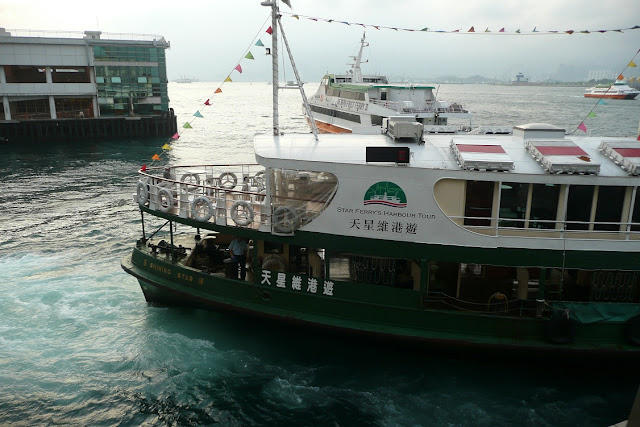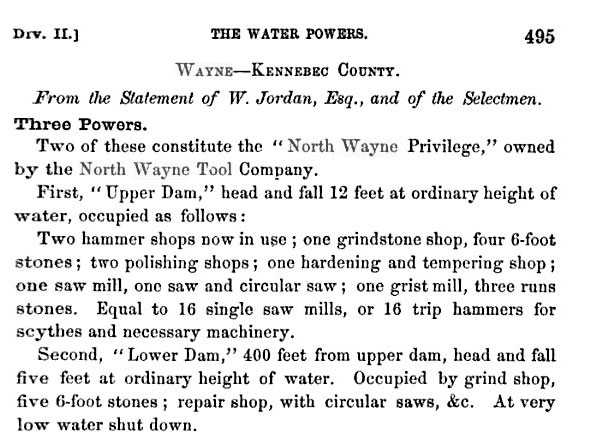Saturday, June 30, 2012
Clamping down on shop projects
Above, shop projects that eventually found their way onto garage sale tables where I found them. Some are very well made.
Friday, June 29, 2012
We used to make things in this country. #79: Canada Varnish Ltd., Leaside Ontario
Canada Varnish Ltd. made paints and varnishes in a factory in Leaside, Ontario. Leaside was once a hub of manufacturing. For a brief overview of the range of this industrial history, visit the East York Historical Society.
I can't find much information about the company itself. However, Rupert E. Edwards was the proprietor when in 1944 he purchased an 11-hectare property called the Milne Homestead. Over the next twelve years, he created a garden, large rockery, ponds, rustic bridges, flower beds and a 9-hole golf course. He wanted to see the gardens become a public park, and this happened in 1955 when the estate was purchased by the City of Toronto. It's now known as Edwards Gardens.
I can't find much information about the company itself. However, Rupert E. Edwards was the proprietor when in 1944 he purchased an 11-hectare property called the Milne Homestead. Over the next twelve years, he created a garden, large rockery, ponds, rustic bridges, flower beds and a 9-hole golf course. He wanted to see the gardens become a public park, and this happened in 1955 when the estate was purchased by the City of Toronto. It's now known as Edwards Gardens.
Best Wishes for Mister G
Mister G, perhaps inspired by Nik Wallenda, took a 12-foot dive from a barn beam several weeks ago. Below, a photo of how I imagine he looks. Let's all wish him a speedy recovery.
.jpg) |
| Charles Phillips Emerson, Jr. & Jane Elizabeth Taylor, Essentials of Medicine, 15th Edition. Philadelphia: J.B. Lippincott Company, 1946 |
OEC 1937
The Osborn Engineering Company built motorcycles from 1901- 1954. They used a variety of engines over the years and in 1927 built bikes with the first duplex steering system as highlighted in this ad.
During WW2 they ceased building motorcycles to concentrate on military contracts. They resumed after the war with a couple of lightweights. These were not successful and the factory closed in 1954.
Thursday, June 28, 2012
Danger in Deep Space
Illustrations by Louis Glanzman for Carey Rockwell, Danger in Deep Space. A Tom Corbett Space Cadet Adventure. (New York: Grosset & Dunlap, 1953).
Star Ferry, Hong Kong
The Star Ferry was founded in 1888 to ferry passengers between Hong Kong Island and the mainland at Kowloon. Despite competition from road tunnels and the subway, it remains a popular method to travel, feeling like another era while carrying 70,000 people a day on its twelve boats and two routes. It's a popular tourist attraction, providing scenic views during the short "ocean" crossings.

The seat backs flip over depending on the direction of travel.
It's hard to get a waterfront picture without a Star Ferry or two in the frame.
Northern Star docked at the Kowloon Terminal.

Solar Star making its way across a busy harbour.
Shining Star pulling in at Central.
The seat backs flip over depending on the direction of travel.
Pilot House.
It's hard to get a waterfront picture without a Star Ferry or two in the frame.
Wednesday, June 27, 2012
Penny Farthing and Tinpot Copper
Brian Johnston, best known as a cricket commentator for the BBC, had a live broadcast segment from 1948 to 1952 called "Let's Go Somewhere" in which he would travel to different spots in Britain and try out various jobs or activities. Below are two photos from his book of the same name (Let's Go Somewhere. London: Cleaver-Hume Press Ltd., 1952).
Tuesday, June 26, 2012
Vanished Tool Makes: North Wayne Tool Company
In my ongoing battle with the Canada Thistle (also called "Lettuce from Hell Thistle" and, by the way, actually introduced first in the United States, not Canada), the only weapon I have found that really works is a manual weed root cutter. I found the one below recently at a thrift shop:
The area near what is now Oakland, Maine is situated around the Messalonskee Stream, which drains the entire Belgrade Lakes chain. This offered the advantage of falling 120 feet, so industry quickly began to form along side of it beginning with gristmills and sawmills as early as 1790. According to the Davistown museum website, industries that flourished and died along the stream included tanneries, furniture and carriage shops, iron foundries, machine shops, boat and casket makers, shingle mills, tool handles, and perhaps most importantly, edge tool manufacturers and woolen mills. Eventually, there were four dams on the river. The edge tools, axes, scythes, sickles, etc. were first produced in the 1830's at the last dam near the cascade. The edge tool business blossomed at various sites along the stream during the second half of the 1800's and Oakland became the ax and scythe capital of New England, if not the United States. One of the companies was the Dunn Edge Tool Company, which seems to have started in 1832 (or 1837, although perhaps 1879). At its peak, it was producing 180,000 scythes and 120,000 axes per year. In fact, it produced more scythes than any other factory in the world. Around 1904, it became the North Wayne Tool Company, a manufacturer of agricultural edge tools and whose products included bread knives, corn hooks, hay knives, dibbles, weeders and hoes, some under the "Little Giant" brand name. The company survived several fires (an occupational hazard in this industry) but finally succumbed in 1967 or 1969.
The following photos are taken from Rootsweb, and that webpage has many other fascinating photos of the edge tool manufacturing concerns of the day:
Below, a newspaper article from the Lewiston Evening Journal of April 23, 1898 that gives insight into what it was like to make these tools back then:
More information: note the diameter of the sharpening stones!
Monday, June 25, 2012
A tribute to the Wright brothers
From Olive Beaupré Miller (Editor), Over the Hills of My Book House. Chicago: The Book House for Children, 1920, 34th printing 1951.
Subscribe to:
Posts (Atom)










.jpg)
.jpg)
.jpg)
.jpg)
.jpg)
.jpg)










.jpg)
.jpg)






.jpg)
.jpg)
.jpg)










.jpg)
.jpg)